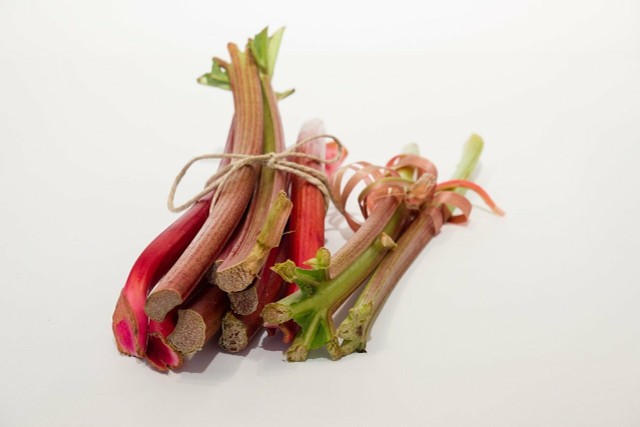Propagate rhubarb is quite simple. You have two options. Here you will find detailed instructions on the correct technique and the best time.
Rhubarb is a popular ingredient in jams, cakes and desserts. However, the perennial is a vegetable and not a fruit. Only the stalks are suitable for consumption. If you propagate rhubarb, you will have more of it.
The rhubarb perennial grows as a permanent crop. That means once you grow a plant, it can yield for up to eight years and continue to reproduce. Learn everything you need to know about rhubarb in another Utopia article.
Even as an amateur gardener:in it is easy to propagate rhubarb. You have two options: You can propagate rhubarb by division or take cuttings.
The method of division is used more often, because the chances of success are higher. However, with both methods it is important to water the rhubarb regularly and provide enough space and sunlight. You can also fertilize the rhubarb to get better yields.
Propagate rhubarb: How to divide rhubarb

You can propagate rhubarb simply by division. For this you need:
- a rhubarb plant
- a sharp spade
- plant fertilizer
The best time to propagate rhubarb by division is in the fall. After harvesting in the spring and growing in the summer, the plants have enough time in the fall to grow before winter. As soon as the leaves start to yellow, you can start dividing. Proceed as follows:
- First, you should prepare your planting site for the new rhubarb plant. To do this, remove the weeds, loosen the soil and add some fertilizer to the soil. Rhubarb should have enough space. Therefore, plan about one square meter per perennial.
- Dig up the old planting stock and free the root from soil and old or rotten spots.
- Divide the root with your spade. Depending on the size, you can get several seedlings. Make sure that there are still shoots or leaves growing on each root.
- Dig a hole with the spade in the prepared spot.
- Place the new rhubarb plant in the hole and cover the root with soil. The young shoots should be just below the soil surface.
- Place all other parts of the perennial back into the soil as well.
- Water the young rhubarb plants vigorously.
- Tip: You can also divide the rhubarb while the plant is still in the ground. To do this, divide the root directly on the spot with a spade and take out a hectare from the soil. However, the clean cut will then not succeed as reliably. In addition, rhubarb is one of the highly nutritious plants. Therefore, it is good to replant the existing perennials to save the soil.
If you don’t want to dig up the perennial, then propagation by cuttings is suitable.
How to plant cuttings

Taking cuttings is an easy way to propagate plants. You can also easily propagate rhubarb with cuttings. The best time for this method is late June to early July. At this time, the rhubarb is in the growth phase and has the greatest chance of forming new roots.
What you need for propagation with cuttings:
- a rhubarb plant
- a sharp knife
- a glass with fresh water
To propagate rhubarb with cuttings, you can proceed as follows:
- Just like harvesting rhubarb, you twist out some stems along with the leaf. You should not cut the stems, otherwise the mother plant may be injured.
- Make a smooth cut at the bottom of the stem with a sharp knife.
- Remove most of the leaf. It is enough if about one third of the leaf remains on the stem. This way you avoid excessive evaporation from the leaf surface.
- Place the cutting in a glass with fresh water. The best location is in a bright place. However, you should avoid direct sunlight.
- Change the water every two to three days.
After a few days, your rhubarb should form cutting roots. Once enough roots have formed, you can repot the cutting into a pot with peat-free growing soil.

